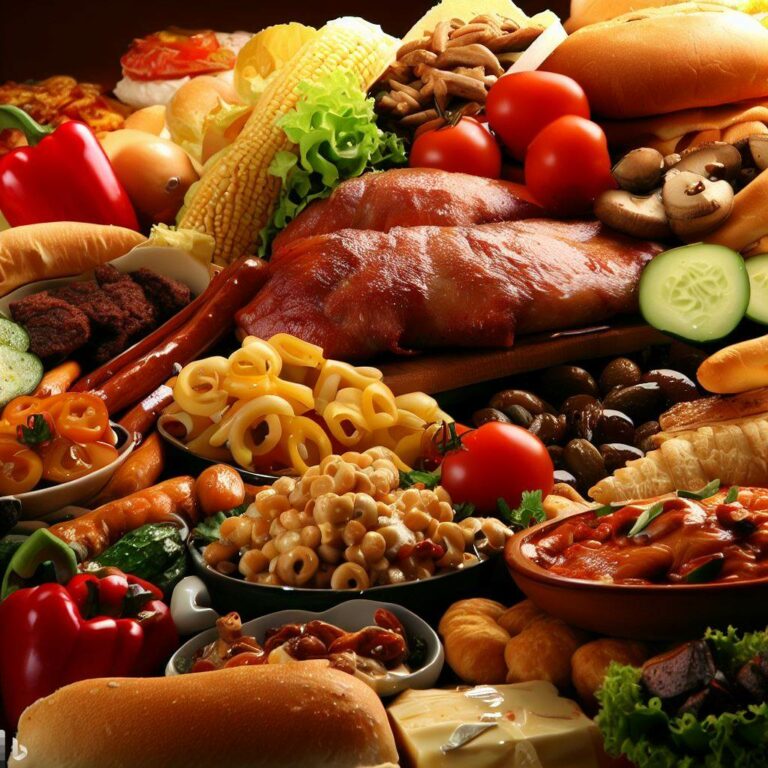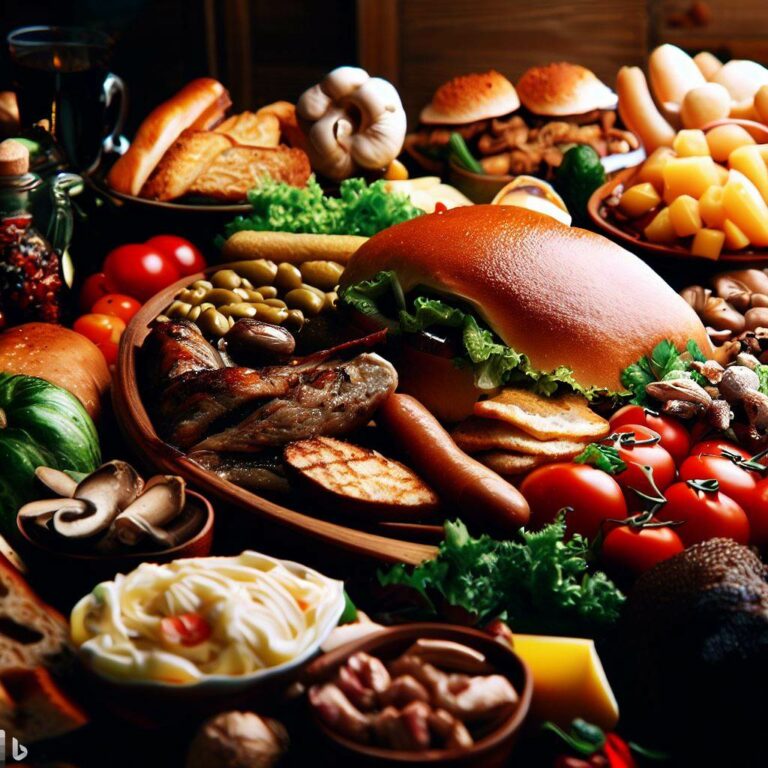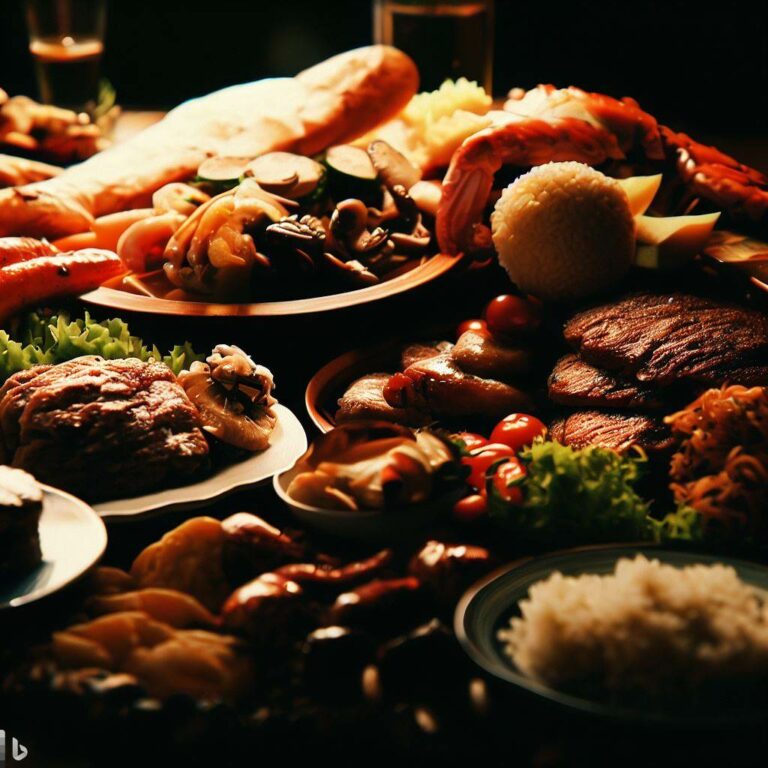Weird and Wonderful: A Quiz on Unusual Food Facts

Eating is an amazing experience. From the flavor to the texture, there’s so much to explore in each bite. But ever wondered about the wacky world of food? Let’s delve into some unique food facts that’ll surprise you!
Did you know chocolate was once currency? Cocoa beans were so precious they were even used to barter! Who’d have thought a sweet treat could be money?
Durian is a spiky fruit with a smell like rotten onions and gym socks. Despite its pungent aroma, it’s prized in Southeast Asia. It’s even called the “king of fruits.” Its custard-like flesh has an addictive taste.
Sushi has a history of over 2,000 years in Southeast Asia. It was created to preserve fish by fermenting it with rice. Over time, it evolved into what we know today as sushi.
These fun-filled food facts are amazing! Our taste buds can lead us on extraordinary culinary journeys. So, next time you bite into something new, remember there may be an exciting story behind it!
Weird Food Facts
Is it odd or amazing how food can have odd features that leave us baffled? Here are some fascinating facts about food that will take you on a gastronomical journey. Check out these peculiar food facts:
Let’s jump into an array of genuine, mind-boggling food facts:
| Food Fact | Description |
|---|---|
| Durian fruit is notorious for its strong odor | People say it smells like rotten onions, sweaty socks, and even sewage. Despite this, its unique taste has made it a beloved treat in Southeast Asia. |
| Lobsters were once seen as peasant food | In the 1700s, lobsters were so abundant in North America that they were viewed as food for the poor and prisoners. How times have changed! |
| Honey never spoils | Archaeologists discovered honey pots over 3,000 years old in ancient Egyptian tombs that were still edible. Honey’s low water content and acidic pH make it difficult for bacteria to grow. |
| The most expensive coffee comes from animal poop | That’s right! Kopi luwak, also known as civet coffee, is made from coffee beans excreted by civets. This process affects the flavor of the beans and leads to a high price tag. |
These were just glimpses of the weird and wonderful food universe.
Now let’s explore more astonishing details that will make your taste buds tingle with curiosity:
- Cucumbers are actually fruits! Botanically speaking, cucumbers are part of the gourd family along with melons and pumpkins.
- A single lemon has more sugar than a strawberry.
- The biggest omelet ever weighed over 6 tons – the same as 112 elephants!
Ready to start your culinary adventures? Here are some ideas to pep up your food experience:
- Try new flavors and ingredients. Step out of your comfort zone and explore the diversity of cuisines.
- Experiment with different cooking techniques. Grilling, baking, steaming – each one brings out unique flavors and textures.
- Connect with local communities. Visit farmer’s markets or food festivals to find local specialties and meet passionate foodies.
By following these ideas, you will embark on a yummy journey with tasty surprises around every corner.
Food isn’t just fuel; it is a pathway to unexplored lands of pleasure and discovery. So let’s celebrate the extraordinary food world in all its weird and wonderful glory! Watch out though, when attending a traditional Icelandic feast, where fermented shark is served as an appetizer and your sense of smell becomes the main course.
Unusual Food Traditions
It’s mind-blowing how different cultures have their own food traditions – from ancient rituals to odd ingredients! Let’s look at some of these unusual customs around the world.
In Japan, Fugu (pufferfish) is a famous delicacy that can be lethal if not cooked properly. Mexico has Chapulines (crispy fried grasshoppers) which they enjoy with lime juice and chili powder. Surströmming (fermented herring) is popular in Sweden, and Century Eggs (preserved eggs) are a Chinese specialty. In Iceland, Hákarl (fermented shark meat) is a must-try.
These traditions have deep cultural significance to their respective countries. By exploring them, we can broaden our culinary horizons. For example, in South Korea, they eat live octopus called “sannakji”. In Scotland, haggis is a traditional dish made from sheep’s offal, oats, onions, and spices.
From pulled porcupine to deep-fried tarantula, these bizarre ingredients will make you question your taste buds and your sanity. Plus, did you know that in Italy it’s considered bad manners to twist spaghetti around your fork with a spoon? Italians only use their fork – Buon appetito!
Bizarre Ingredients
Ever wondered what strange ingredients you can find in the culinary world? Let us explore some incredible examples that will leave you astounded! From the bizarre to the extraordinary, these ingredients take taste and imagination to a whole new level.
For example, edible gold is used to garnish luxurious desserts. Century eggs from China have a unique taste and texture due to a preservation process. Durian fruit from Southeast Asia may be smelly but has a rich and creamy flesh. Hakarl from Iceland is fermented shark meat with a distinct ammonia aroma. Lastly, escamoles from Mexico add an unexpected twist to dishes by using ant larvae from agave plants.
Did you know that century eggs were discovered in China by accident during the Ming Dynasty? A homeowner stumbled upon some eggs hidden in a mixture of lime, salt, clay, and rice straw in his backyard. He took a bite and found that it had an unexpectedly delicious flavor. This accidental discovery led to one of China’s most famous delicacies – century eggs.
There are so many unheard-of ingredients out there to explore. So, get ready for a wild and unforgettable ride and embrace the extraordinary – don’t knock it till you’ve tried it! Roasted tarantula on a stick, anyone?
Exotic Food Dishes
Experience the exotic! Let your taste buds take you on a journey through the world’s most extraordinary dishes. Ready for the ride? Here are some unique delicacies from around the globe:
- Escamoles from Mexico – ant larvae.
- Hákarl from Iceland – fermented and dried shark meat.
- Balut from the Philippines – a boiled, fertilized duck embryo.
- Snake wine from Vietnam – venomous snakes left to steep in rice wine.
- Ayu no Shioyaki from Japan – grilled sweetfish.
Culture plays a big role in the cuisines of the world. For example, in China’s Guizhou Province, cooked rat dishes are savored due to the belief in its medicinal properties.
Take a chance and sample something new – start your own gastronomic expedition! And if you think your Aunt Mildred’s Jell-O mold is weird, you haven’t heard about the fermented shark and maggot cheese that people willingly eat around the world!
Conclusion
The odd and amazing world of food is full of never-ending surprises. From weird ingredients to unusual cooking methods, something new and captivating is always there to be discovered. As we finish exploring the fascinating facts about food, let’s pause to think about the incredible trip we have taken.
Throughout this article, we have gone through the unknown of culinary peculiarities, finding out lots of astonishing things about the most unusual foods. We have been surprised by the complexities in making sushi, questioned the origin of blue cheese, and even regarded the historical importance of saffron being one of the priciest spices around.
Still, amidst all these revelations, there are still some unique details that remain unknown. Did you know that durian, known as “the king of fruits,” has a strong smell that many think is repulsive? Or, did you know that in certain cultures, ants are consumed and even used in some dishes?
But let us not forget that behind every strange food fact is a long story to be revealed. For instance, the story of how chocolate became related to Valentine’s Day begins with ancient Aztec customs, where cacao beans were highly valued and thought to have romantic properties. This amazing story is a reminder that throughout time, food has not only fed us physically, but it has also been part of cultural habits and traditions.
Frequently Asked Questions
Q: What is the weirdest food ever eaten?
A: The weirdest food ever eaten is subjective, but some unusual examples include balut (a developing duck embryo), fried tarantulas, and haggis (a dish made from sheep’s heart, liver, and lungs cooked in a sheep’s stomach).
Q: Can weird foods be dangerous to eat?
A: While most weird foods are safe to eat, some can pose health risks if not prepared properly. It is essential to research and ensure the food is cooked, handled, and sourced in a safe manner before trying anything unfamiliar.
Q: Are there any health benefits to eating weird foods?
A: Some weird foods have unique nutritional profiles and may offer health benefits. For example, insects are rich in protein and healthy fats, while offal (organ meats) contains essential vitamins and minerals. However, it is important to consider individual dietary needs and consult a healthcare professional.
Q: Are there any unusual food combinations that work surprisingly well together?
A: Absolutely! Unusual food combinations like chocolate and bacon, peanut butter and pickles, or watermelon and feta cheese can create surprisingly delicious flavors. Exploring and experimenting with different ingredients can lead to exciting culinary discoveries.
Q: Why do people eat weird foods?
A: People eat weird foods for various reasons. It can be a cultural tradition, a way to push culinary boundaries, curiosity, or simply seeking new and exciting flavors. Some also believe that trying different foods can be an adventurous and memorable experience.
Q: How can I safely try weird foods?
A: To safely try weird foods, it is recommended to start with reputable sources such as well-established restaurants or local culinary experts. Research about the food, its preparation, and potential health risks beforehand. It’s also important to listen to your body and stop eating if you experience any discomfort.
- How to Design a Hard Harry Potter Trivia Challenge - October 4, 2023
- How to Design a Dear Peachie Makeup Preference Poll - October 4, 2023
- How to Design a Fun Board Game Trivia Night - October 3, 2023













